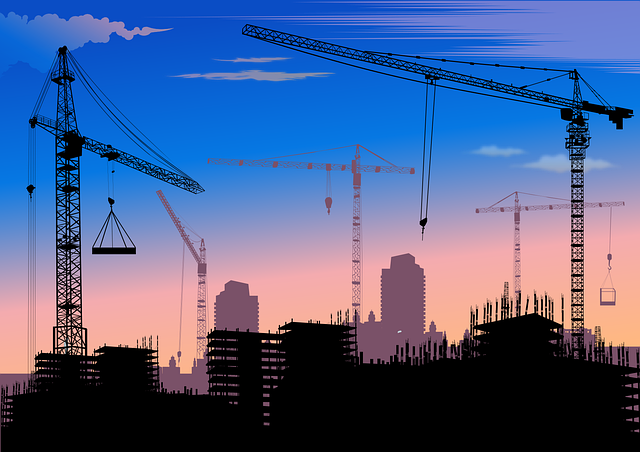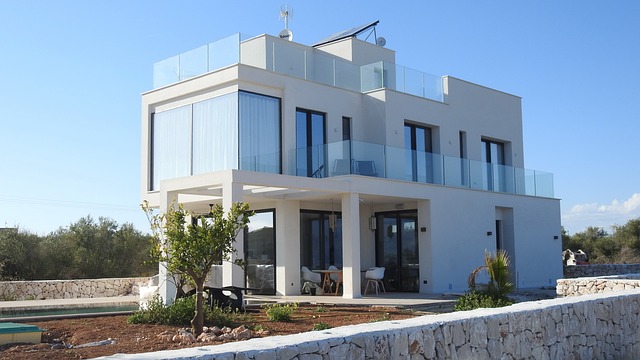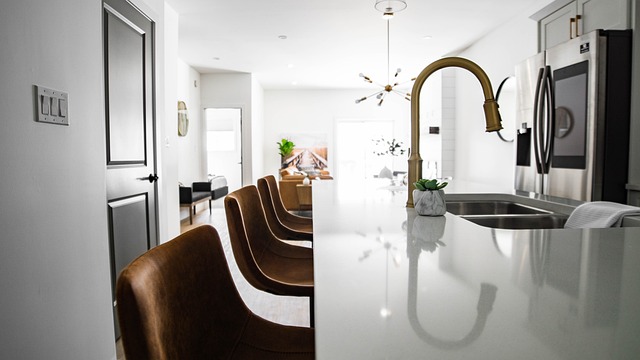Singapore's Executive Condos (ECs) are designed to serve middle-income families with sustainable, quality living spaces that align with government policies. Since their introduction in the 1980s, ECs have been subject to the Executive Condo Requirement, which mandates applicants be at least 25 years old, Singaporean citizens, and meet an income ceiling. The Housing & Development Board (HDB) oversees these developments, ensuring they meet strict design, building, and sustainability standards. New ECs are equipped with eco-friendly features, smart home technology, and modern amenities, reflecting Singapore's commitment to sustainable living and progressive housing policies. The latest EC projects, like The Arriva, exemplify compliance with these requirements while offering innovative designs that cater to the needs of young families and professionals, all within accessible locations. These developments are part of a broader effort to enhance urban living through sustainable design, energy-efficient technologies such as solar panels, and adherence to regulations set by authorities like the Building and Construction Authority (BCA). The Arriva stands out as a model EC, balancing comfort with sustainability, and setting a high bar for future projects.
Navigating the dynamic landscape of Executive Condo (EC) construction, this article delves into the evolution and current standards that define these unique housing entities. From the intricacies of site selection and competitive land bidding processes to the latest architectural and design innovations, we explore how ECs are not just meeting but setting new benchmarks in residential development. Additionally, we’ll examine the significant strides in sustainable construction practices within EC projects, aligning with Executive Condo Requirements for a greener future. A spotlight case study illustrates a successful EC project that exemplifies compliance and innovation, offering valuable insights into the industry’s trajectory.
- Overview of Executive Condo (EC) Evolution and Current Standards
- Site Selection and Land Bidding for New EC Projects
- Architectural and Design Innovations in Recent Executive Condos
- The Latest Trends in Sustainable Construction within EC Development
- Case Study: A Successful Executive Condo Project and Its Compliance with Requirements
Overview of Executive Condo (EC) Evolution and Current Standards

Singapore’s landscape is punctuated with Executive Condos (ECs), a housing type designed for the middle-income group, offering a blend of benefits from both public and private housing. The evolution of ECs reflects the government’s commitment to providing affordable and quality living options for families. Initially introduced in the 1980s, these residential complexes have seen several rounds of refinement to meet the changing needs of residents. Today, Executive Condo Requirement stipulates that applicants must be at least 25 years old, with Singaporean citizenship and an income ceiling to apply for an EC. This ensures that only those who can afford resale flat prices or private condominiums are eligible, aligning the scheme with its intended demographic.
Current standards for Executive Condos are regulated by the Housing & Development Board (HDB) and subject to stringent guidelines. These standards encompass design criteria, building codes, and environmental sustainability practices. The aim is to provide residents with modern amenities, spacious living areas, and facilities that cater to a variety of lifestyle needs. The latest Executive Condo developments showcase innovative architectural designs, eco-friendly features, and smart home technologies, reflecting the dynamic nature of Singapore’s housing policies and the country’s forward-looking approach in the realm of sustainable living.
Site Selection and Land Bidding for New EC Projects

Executive Condos (ECs) in Singapore are a unique housing type that caters to the needs of couples and families with Singapore Citizen (SC) and Permanent Resident (PR) family nuclei. The development of new EC projects begins with meticulous site selection, a process guided by the Housing & Development Board (HDB) and the Urban Redevelopment Authority (URA). Developers vie for these prime locations through a competitive land bidding process, where they assess potential sites against the Executive Condo Requirement, which mandates that such developments must be at least 300m from any existing or forthcoming MRT station. This requirement ensures accessibility and convenience for residents, while also considering the socio-economic fabric of the surrounding area. The bidding process is influenced by factors like the site’s size, potential views, proximity to amenities, and transport connectivity. Developers must also consider the future master plan for the region, which outlines zoning and development guidelines that align with broader urban strategies. Successful bids not only reflect a strategic understanding of these constraints but also demonstrate a developer’s vision for creating sustainable living spaces that meet the evolving needs of EC residents. The selected sites then become the foundation for new EC projects, contributing to the vibrancy and diversity of Singapore’s residential landscape.
Architectural and Design Innovations in Recent Executive Condos

Executive Condos (ECs) have seen a significant evolution in architectural and design innovations, aligning with the latest Executive Condo Requirement guidelines. These developments are not just about aesthetics; they encompass sustainable building practices, technological integration, and responsive living spaces that cater to modern urban life. Recent ECs incorporate smart home technologies that allow residents to control lighting, security systems, and climate from their mobile devices. This integration of technology enhances convenience and energy efficiency. Additionally, the design emphasis on maximizing natural light and ventilation not only improves the living experience but also contributes to environmental sustainability. The use of high-performance materials and energy-efficient appliances is becoming more common, reducing the overall carbon footprint of these residences. Architects are also rethinking space utilization, creating multifunctional areas that adapt to diverse lifestyle needs, reflecting a dynamic approach to living that aligns with the Executive Condo Requirement’s forward-looking standards. These innovations ensure that Executive Condos remain at the forefront of modern residential living while providing a cost-effective alternative to private condominiums.
The Latest Trends in Sustainable Construction within EC Development

The construction of Executive Condos (ECs) in Singapore has seen a significant shift towards sustainability, reflecting global trends and local regulations. Developers are increasingly incorporating green building practices to meet the Executive Condo Requirement, which mandates environmentally friendly design and materials. A notable trend is the use of energy-efficient systems such as solar panels, which not only reduce the carbon footprint but also lower utility costs for residents over time. Additionally, sustainable materials that are both durable and locally sourced are being prioritized to minimize transportation emissions.
In line with these developments, innovative design strategies are being employed to optimize natural light and ventilation, thereby reducing reliance on artificial lighting and air conditioning. Rainwater harvesting systems and greywater recycling are also becoming commonplace, further contributing to the reduction of water usage. Building information modeling (BIM) is being utilized to enhance the planning process, allowing for more precise resource allocation and waste reduction during construction. These initiatives not only comply with the Executive Condo Requirement but also align with Singapore’s Smart Nation vision, where technology and sustainability converge to create living spaces that are both efficient and comfortable.
Case Study: A Successful Executive Condo Project and Its Compliance with Requirements

An exemplary case study in the realm of Executive Condo (EC) construction is the development known as “The Arriva.” This project stands out for its adherence to the stringent Executive Condo requirements set forth by the relevant authorities in Singapore. The Arriva was meticulously designed to cater to the needs of young families and professionals, offering a harmonious blend of comfort and convenience. Its success hinges on its compliance with the Housing & Development Board (HDB) guidelines, which dictate that an EC can only be purchased by Singapore citizens who, upon reaching the age of 55, can apply to buy the flat from the HDB at the prevailing market rate.
The construction of The Arriva was a testament to meticulous planning and adherence to the Executive Condo requirements, which include a minimum size for units, a mix of unit types to cater to diverse needs, and close proximity to key amenities. The development’s location, near ample shopping, dining, and transport options, ensures that residents have easy access to everyday necessities. Additionally, the project incorporated sustainable design principles, which align with the Building and Construction Authority (BCA)’s Green Mark standards, enhancing its appeal as a forward-thinking and environmentally conscious residential option. The Arriva’s commitment to these requirements has made it a benchmark for future EC projects, demonstrating that compliance with regulations can coalesce with innovative design and sustainable practices to achieve unparalleled success in the Executive Condo market.
In recent years, the Executive Condo (EC) landscape has witnessed significant advancements, with a keen emphasis on meeting and exceeding the Executive Condo Requirement standards. The meticulous selection of sites through competitive land bidding and the integration of innovative architectural designs have contributed to the creation of living spaces that are not only aesthetically pleasing but also environmentally responsible. The adoption of sustainable construction practices marks a pivotal step forward in aligning with contemporary ecological expectations and setting a benchmark for future development projects. A case study of a successful EC project exemplifies the fruitful outcomes when these multifaceted requirements are harmonized effectively. As the evolution of ECs continues, it is clear that adherence to stringent standards and an unwavering commitment to innovation will remain at the forefront of their development, ensuring that they meet the diverse needs of modern families while preserving the environment for generations to come.
